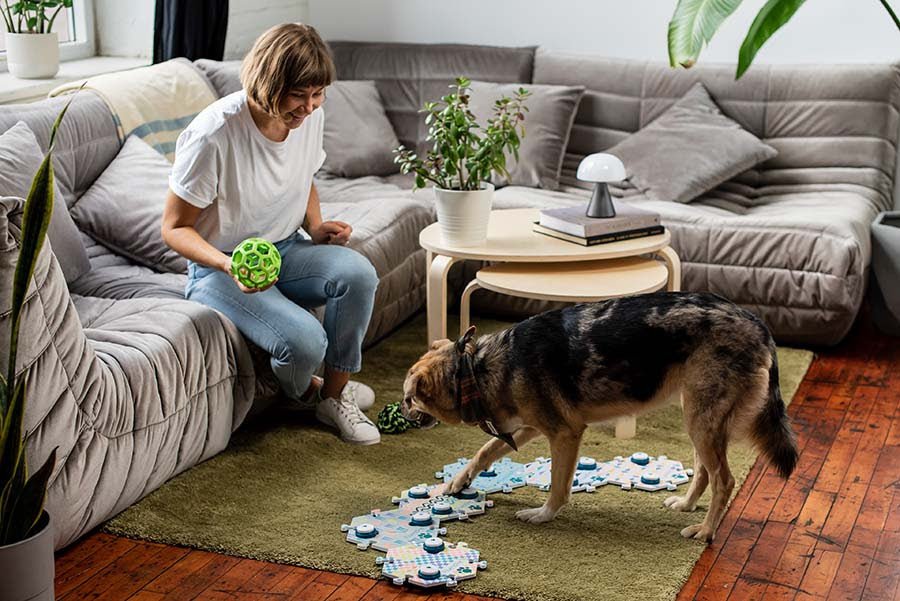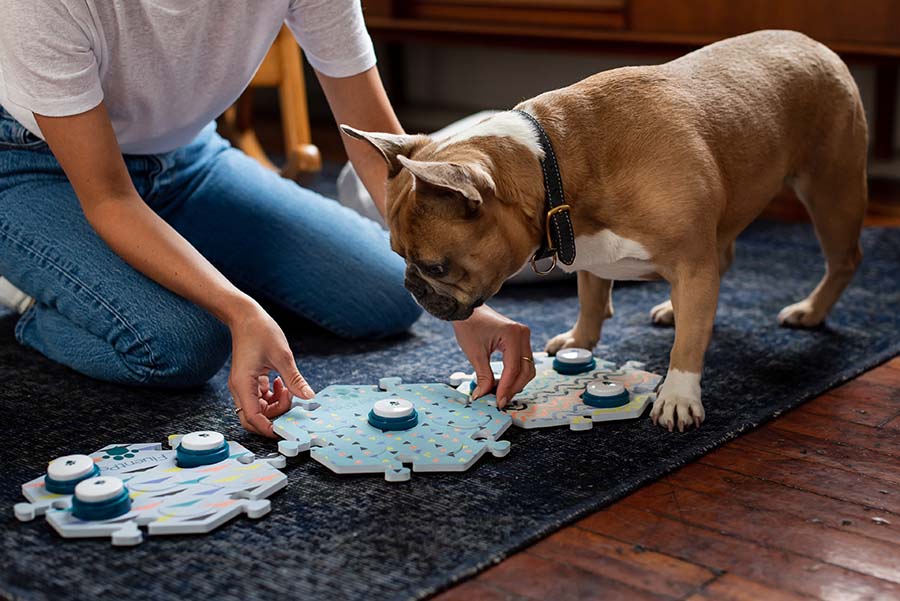Why teaching our feline friends target training can be beneficial
What’s “target training” and how can it benefit your learner?
“Target training” aims to teach a dog, cat, or other animal to touch a specific object or location. It is one of the most helpful early skills in button teaching, giving you the ability to guide your learner’s attention, redirect anxious and fearful behavior, or assist routine health checks and vet visits. For button teaching, target training helps your learner develop the action pattern needed for successful button use.
Below we’ve compiled tips and suggestions for successful target training. You can also check out this paw targeting tutorial, starring @whataboutbunny, to learn more.
To get your cat or dog started, keep them interested.
Begin by rewarding them for just noticing the target. For example, if your kitten is sniffing around it, great! Give ‘em a treat. As your learner figures out that interacting with the target results in a treat, reward them for gradually moving closer and closer, until they’re touching the target.
Try designating a distinctive target item that’s small and flat-shaped—such as a yogurt lid, frisbee, or post-it note—during practice. This helps them understand the behavior you're asking for. Later on, you can generalize this behavior by switching up the target.
Reward appropriate touches by immediately following up with whatever else your learner loves.
Another tip is to reward with what your learner loves (and that isn’t always treats). Our feline friends may be choosier, so make sure you find something that really gets their attention. Maybe they prefer praise, pets, or playing with you. For those learners, try rewarding appropriate touches by immediately following up with whatever else your learner loves.
If you’re going slow and your learner jumps ahead a step or three, reward them heavily. It’s important to remember to end on a success. Ending on a success means rewarding your learner’s best attempt with great enthusiasm.
Don’t worry if not a lot of progress was made. Sometimes, our learners need a little time to process—progress isn’t always linear!
More Tips & Tricks
To get more tips and tricks on how to teach your learner new words, check out our Guide to Getting Started with Talking Buttons.
Enjoyed the read? Join us for more discussions like this at How.TheyCanTalk.





Leave a comment
This site is protected by hCaptcha and the hCaptcha Privacy Policy and Terms of Service apply.